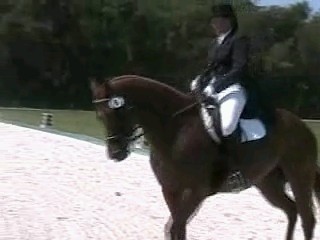
WHAT IT IS AND HOW IT WORKS
Unknown to many, Traditional Oriental Medicine is a major health care system for over one quarter of the world's population. Cited as an effective system of health care by National Institute of Health (NIH) and the World Health Organisation (WHO), acupuncture is becoming a serious alternative or compliment to conventional pain management and medical treatments. Acupuncture is one of the oldest, most commonly used medical procedures in the world,originating in China more than 3000 years ago.
Oriental medicine is an effective, low cost medical treatment that works in harmony with the body's natural ability to heal. Diagnosis in Oriental medicine involves the classical procedures of observing, listening, questioning and palpation, including feeling the pulse quality. Treatment focuses on the well-being of the entire person, not simply on the physical complaints and symptoms.
According to the theories of traditional Oriental medicine, all the disorders or diseases are from which people suffer can be related to an imbalance in one's Qi, or vital force, energy. Oriental medicine's aim to improve the patients health both physically and spiritually by re-balancing the body's own healing mechanisms.
Over 2000 acupuncture points on the human body connect with 14 pathways, all meridians. Chinese medicine practitioners believe these meridians conduct energy, or Qi, between the surface of the body and internal organs. Qi regulates spiritual, emotional, mental and physical balance. When qi flow is disrupted, through poor health habits or other circumstances, pain and or disease can result. acupuncture acts to keep the normal flow of this energy unblocked. acupuncture is the insertion of hair-thin needles, disposable one time only used, metal needles through the skin in the acupuncture points on the body's meridians. Acupuncture needles are solid, usually made from stainless steel and extremely flexible. Inserted a few millimeters into the skin, the small diameter and contour shape of the acupuncture needles allows it to be inserted easily and painlessly. Acupuncture needles can also be stimulated with pressure, heat, friction or electromagnetic impulses to further activate a person's Qi.
The intent of acupuncture is to stimulate the body, release energy blocks, and re-establish normal equilibrium, thereby facilitating the body's natural ability to heal itself. In the past 40 years, Chinese medicine and Western, alliopathic medicine, studies have suggested the the insertion of needles at these acupuncture points helps release some chemical neurotransmitters in the body, including endorphins. Endorphins are the body's own, extremely powerful, natural pain killers which relieve pain and bring about a sense of well-being. Clinical studies of acupuncture show treatments for a wide range of illnesses, and have also led to acupuncture's acceptance beyond pain management to include immune enhancement and increase energy and well-being. A study from the University of Pennsylvania Medical Center using a scanning technique called SPECT ( single photoon emission computed tomography) found that acupuncture increases blood flow to the thalamus of the brain, an area that relays pain and other sensory messages.
Oriental medicine's effect are gentle and free of side effects of many drugs used for the same conditions. As a form of primary health care, Oriental medicine addresses a broad range of conditions that western medicine finds difficult to treat such as stress, depression, addiction, chronic pain, allergies, migraines and low back pain. In addition to treating primary health complaints, the benefits of Oriental medicine include but not limited to, pain relief immune enhancement and increased energy and well-being,
Commonly treated Disorders, but not limited too, The United Nation's World Health Organization (WHO) have issued a list of over 30 diseases that lend themselves to treatment by Acupuncture, Homeopatics and Herbals medicine,
Neurological and Muscular-skeletal Disorders
Headache and Migraines
Trigeminal neuralgia
facial palsy (early stage within 3-6 mos)
Paresis following a stroke
Peripheral neuropathies
Menier's disease
Nocturnal enuresis (bedwetting)
cervicobrachial syndrome (frozen shoulder)
Sciatica
Lower back pain
Osteo arthritis
Respiratory system
acute Sinusitis
acute Rhinitis
Common colds
acute tonsillitis
Acute bronchitis
Bronchial asthma
Disorders of the Eye
Acute conjunctivitis
Central retinitis
Myopia (in children)
Cataract ( without complications)
Disorders of the Mouth
tooth aches, post extraction pain
Gingivitis
acute and chronic pharyngitis (bad breath)
Gastrointestinal Disorders
Hiccough
acute and chronic gastritis
Gastric hyperacidity
chronic duodenal ulcer (pain relief)
Acute and chronic colitis
Constipation
Diarrhea
Dr. Catherine Coudray Lic AP. Dipl. AC. Offers a variety of treatment modalities , besides Acupuncture a non-needle Acupuncture procedure is available, we also have Bio-feedback, Homeopatics and include Herbal formulas in concert with Nutritional and lifestyle coaching, visit our home website , www.catherinecoudray.com or call our office @ 321-303-5240 we accept most insurance policies, let us assist you in your journey to better your health.



No comments:
Post a Comment